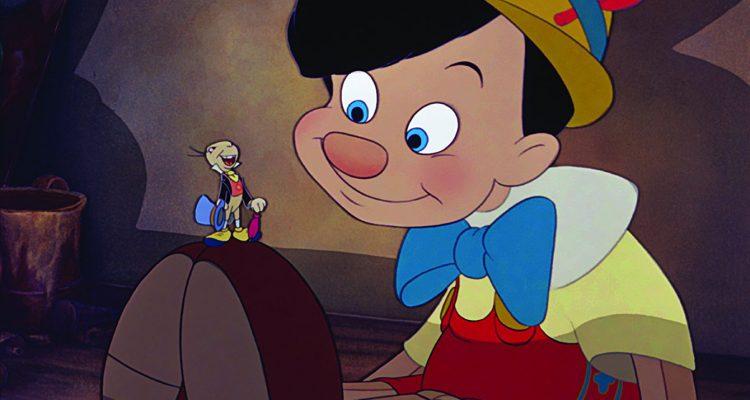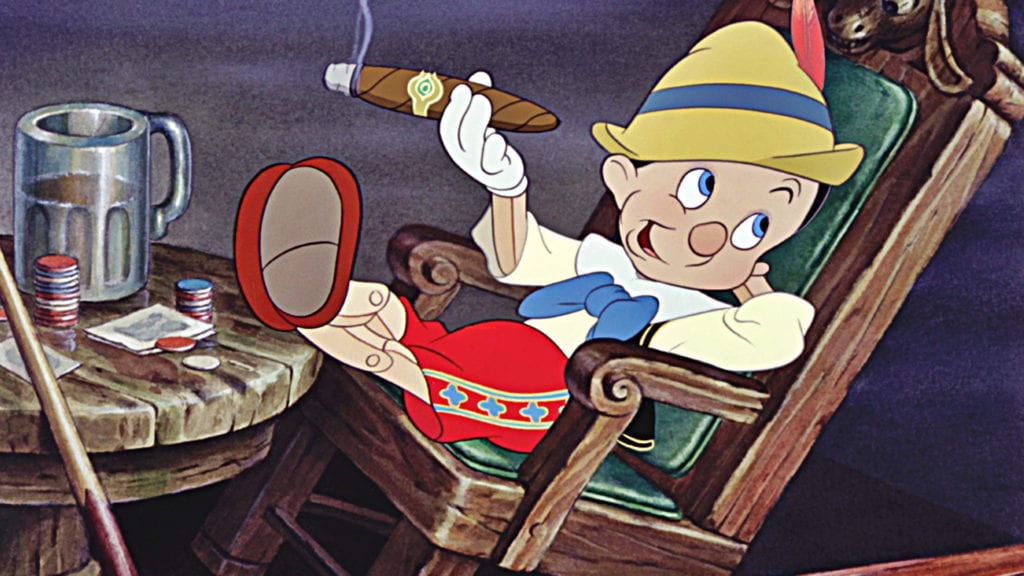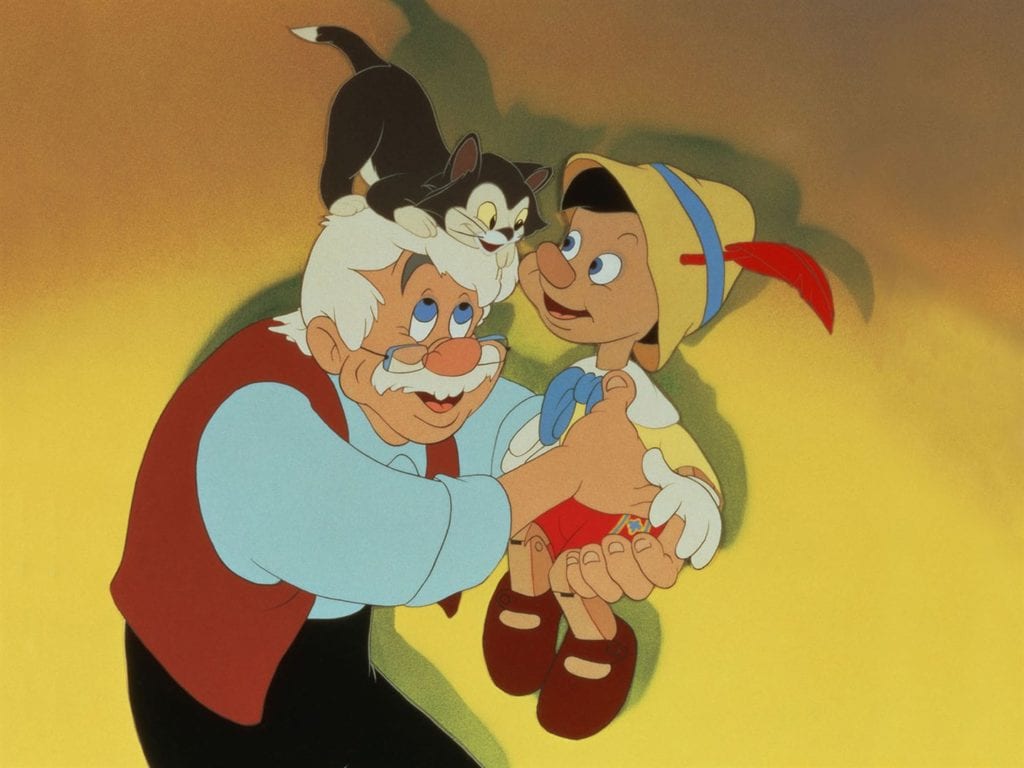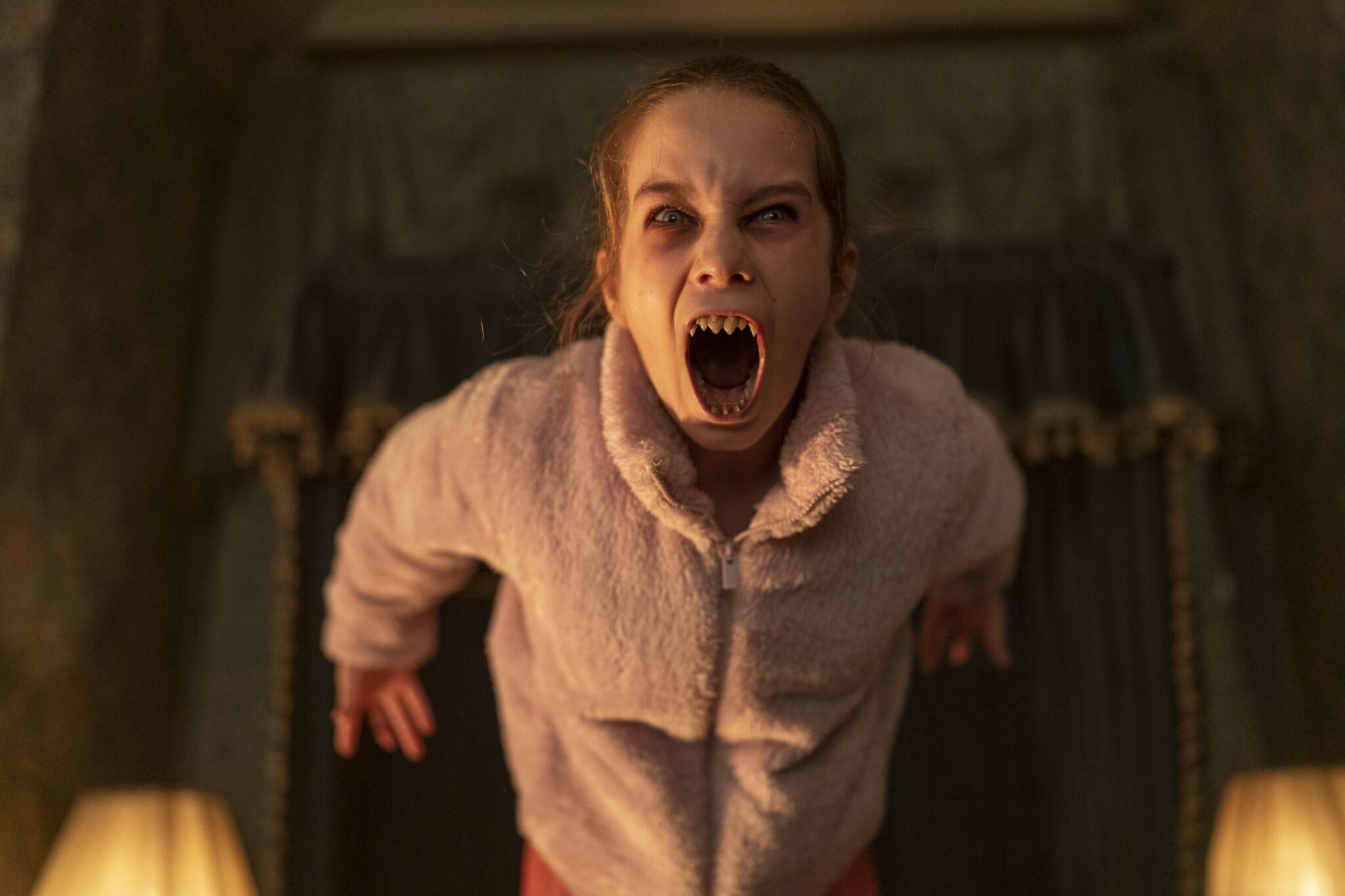
I read the original Adventures of Pinocchio by Italian author Carlo Collodi when I was young at my grandmother?s house and remember being struck by how dark and surprisingly violent it is (fun fact: the first thing Pinocchio does to the Talking Cricket upon meeting him is squashing him dead with his shoe). Indeed, the fairy tale on which Walt Disney chose to base their second feature film can be grim and while Disney?s adaptation adds a lot of slapstick comedy and wit, it also manages to maintain some of the darker themes and more important, the morals, of that story.
We all know the tale: in this version, narrated to us by the Talking Cricket, here given the name Jiminy, elderly toymaker Gepetto, having just completed work on a marionette he?s called Pinocchio, wishes on a wishing star that the puppet might become a real boy, given that he is lonely and has always wanted a son. The wishing star turns out to be the Blue Fairy who comes down to his house to grant his wish. I like that her doing this is not some random act bestowed on just anybody, but because he is a good person, as she plainly tells him, “Because you have brought so much joy to others, to deserve to have your wish come true.”

“Little puppet made of pine, awake! The gift of life is thine,” she then says as she taps our wooden hero on the forehead with her magic wand and Pinocchio slowly makes his first awkward movements.
I also like the wording here, that life is a gift that should not be squandered, for if he ever wants to go from a reanimated puppet to actually being a real boy, he must prove himself worthy of that life, by learning to be “brave, truthful and unselfish.” Of course, being only alive a few moments, Pinocchio has no knowledge of these things, so Jiminy Cricket is appointed his official Conscience, to keep him on the straight and narrow, as it were. His definition of a conscience is still spot on, by the way: “That still small voice that people won?t listen to, and that?s just the trouble with the world today.”
So, from here, the story is a series of mishaps as Pinocchio is sent off to school with his trust Cricket and falls in with various ?wrong crowds? and has numerous misadventures, through which he learns several valuable lessons. When he meets the fox with the trustworthy name of Honest John and his sidekick cat, Gideon, he faces his first temptation and fails miserably. They offer him a chance at life on easy street, claiming that being an actor in stage will bring fame and fortune, or as they put it, “you can stop and buy out a candy store.” What little boy wouldn?t want to do that? Of course, the lesson here is not only don?t trust strangers, but also I think, how does the allure of fame tempt us today, when our face can easily be put on any Youtube video for everyone to see, and also it is important to listen to that voice in our head (in this case, Jiminy?s voice), telling us that something might be amiss.

His life on stage is short-lived, after the cat and the fox sell him to the nefarious puppet-master, Stromboli. He basically kidnaps Pinocchio and locks him in a cage, leading to a nice moment where both Pinocchio and Jiminy realize their shortcomings (let?s face it, Jiminy isn?t a very good conscience in this movie: he is frequently completely unaware of what is going on before it?s too late for him to do anything about it and he is also rather overly fond of the ladies, often to the point of distraction) and then the famous scene where Pinocchio tells lie after lie to the Blue Fairy about how he got in this mess, causing his nose to grow. Again, I like the message here, that you can tell as many lies as you want, but the more to pile on, the more clear it will become that you are lying, until it is indeed as plain as the nose on your face.
Then Pinocchio is conned again by the same cat and fox and finds himself on a coach to Pleasure Island, ‘where every day is a holiday and kids have nothing to do but play.’ Again, an easy temptation for a boy, or any child, really, although Pleasure Island seems to cater only to boys, what with all the smoking cigars, drinking beer, and wanton destruction (a number of things you would never see in an animated children?s movie today, not without a PG rating anyway). The idea I get here is one of peer pressure.

Pinocchio initially shows little interest in these things, until he sees his new friend, Lampwick, wanting to do them and, desiring to fit in, goes along with him. Maybe being bad is fun, he decides. Of course, the more the boys misbehave, the more they act like jackasses, until they quite literally turn into donkeys, leading to one of the most frightening sequences in the film. The transition of Lampwick from cocky, rude, and belligerent to terrified child who just wants his mama, while violently turning into a wild animal, is quite effective. By the way, just what are those strange black creatures that help the evil Coachman load the donkeys onto the boat? They certainly weren?t human. But I digress.
Throughout all this, Gepetto has been searching for Pinocchio high and low. It?s in the ?low? that he finds himself swallowed by a sperm whale, Monstro, and is now languishing at the bottom of the sea. I feel that Gepetto never really cares whether or not Pinocchio is a real boy or not, he still treats him like his son regardless and is willing to sacrifice everything to find him. Even while sitting in the belly of a whale, he wonders what?s become of the poor boy. I like that about him.

Once he finds out his father is lost at sea, Pinocchio finally gets to prove himself brave and unselfish, courageously diving head first into the ocean to find his father and selflessly offering to go alone, not asking anyone to risk their lives with him (Jiminy goes with him of his own accord). The underwater scenes are great fun and the subsequent rescue of Gepetto from Monstro is fantastic, a perfect combination of stunning animation, suspense and emotion, coming together in a whale of a scene. Yet, even in the face of a gigantic angry fish, Gepetto and Pinocchio are still selflessly looking out for each other, Gepetto urging his son to leave him and save his own life and Pinocchio very nearly becoming driftwood himself trying to get his father to shore.
The ending of the story is, of course, a happy one and Pinocchio has been judged worth of his chance to be a real boy through his courage and selflessness. All in all, this is a worthy successor to Snow White, and an all-around better movie, in my opinion. The voice work and character design is faultless, bringing Gepetto to kind-hearted and lovable life, and making Pinocchio, while initially a tad irritating, a cheer-worthy hero who learns from his own mistakes. Jiminy Cricket is hilarious, and I haven?t even mentioned the cute animal sidekicks, the endlessly innovative animated clocks in the toymaker workshop, or the numerous catchy songs, including the Disney staple, ‘When You Wish Upon a Star.’ Above all, I think the morals of the story come through clear and are still worthwhile points for children, and adults.
On a final note, I also find it interesting that, unlike in the original story, you never see any of the villains get any comeuppance. For all we know, Honest John and Gideon are still conning children out of going to school and the Coachman is still selling boy donkeys into slavery to this very day. That adds a layer of realism for me though (I know, realism in a movie about a talking puppet), because in real life, the villains often do go unpunished. They may do evil to you or me and may continue to go on doing evil, but their day of judgment will come, maybe not in our lifetime or any on this earth. Their deeds are not for us to judge. We can only judge ourselves for our own actions. May they be as brave, truthful and unselfish as Pinocchio?s, and that?s no lie.
Alternate versions: There are quite a few variations on this oft-adapted story, but a little-known version came in 1996, featuring the late Martin Landau as a sympathetic Gepetto and Jonathan Taylor Thomas (better known as The Lion King?s young Simba) as Pinocchio, stands out me. The special effects are quite good for its time and while some parts are decidedly strange, rather like an odd mixture of Terry Gilliam and Tim Burton, on the whole it works pretty well. Plus it features songs by Stevie Wonder.



